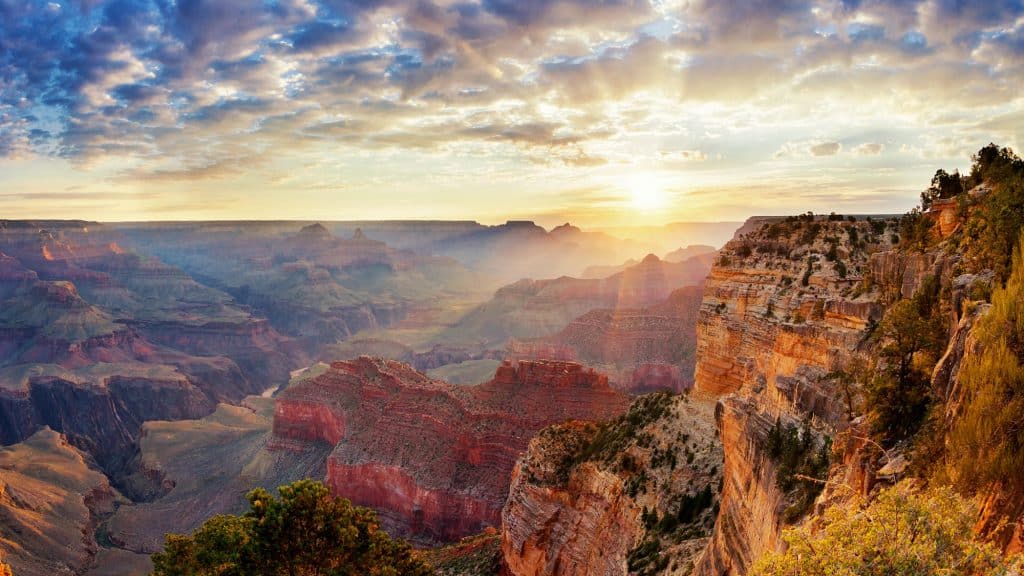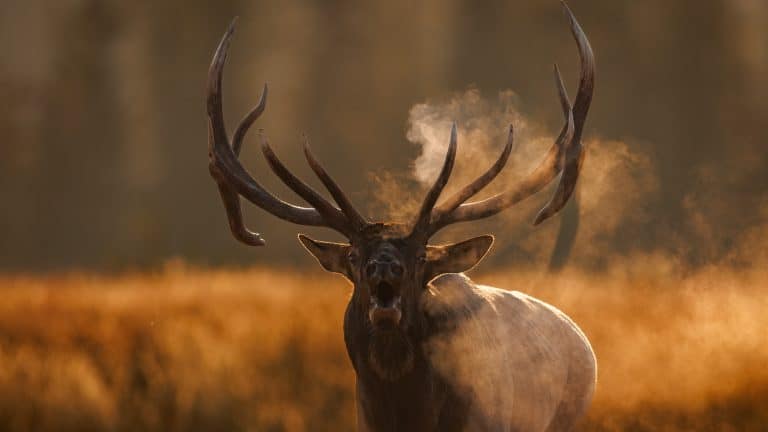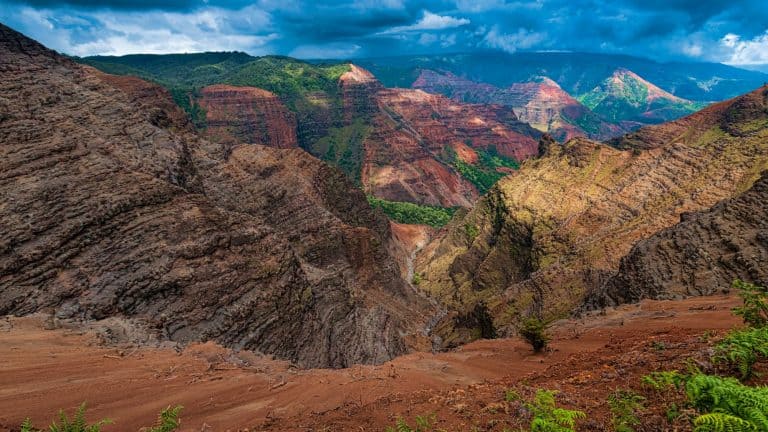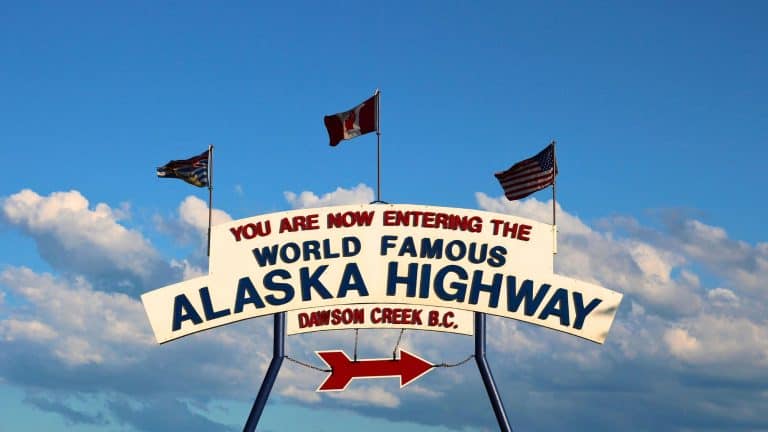Discover Parks & Wildlife contains affiliate links and is a member of the Amazon Services LLC Associates Program. If you make a purchase using one of the Amazon links, we may receive compensation at no extra cost to you. We may also use select AI tools to support our creative process, but all content is reviewed, refined, and finalized by our human team. See our disclosure policy and our AI use policy for more information.
15 Photos Every National Park Photographer Needs In Their Collection
There’s a certain thrill in chasing the perfect shot, isn’t there? That breathless moment right before the light shifts, when everything feels aligned: the sky, the landscape, and your camera’s focus. And national parks have that kind of magic in spades.
They pull you out of routine and into a living postcard that hums with energy and silence all at once. Whether you’re standing on a cliff or kneeling by a stream, every click of the shutter feels like a quiet victory. The kind that makes you forget how early your alarm went off.
Each park carries its own personality. Some whisper ancient stories, others roar like they have something urgent to say. You’ll find color palettes nature designed better than any filter, weather patterns that change faster than your travel plans, and wildlife that may or may not approve of your tripod placement.
There’s no one way to photograph these places, but there are moments that every photographer dreams of catching. The ones that live on hard drives and hearts long after the trip ends. So charge those batteries, double-check your memory cards, and prepare to chase the kind of beauty that refuses to sit still.
Cadillac Mountain

If the world had a “wake up and be amazed” button, Cadillac Mountain would be it. Sitting on the eastern edge of the United States, this peak in Acadia National Park greets the sunrise before nearly anyone else in the country. From October 7 to March 6, Cadillac Mountain is the first place in the U.S. to see the sunrise... which explains why photographers arrive in the dark, clutching coffee like it’s oxygen.
The mountain rises about 1,530 feet. That’s hardly Everest, but tall enough to offer views of Frenchman Bay and the Porcupine Islands that make your lens sing. Getting that signature shot means braving wind that can turn your tripod into a kite and temperatures that test your commitment to “golden hour.”
The trick is to set up before dawn, point east, and wait for the light to spill across the granite. It’s not just a photo; it’s proof you survived 4 a.m. optimism. And if you stay through the morning, the light softens into pastels over Bar Harbor, giving your camera a second round of glory.
If clouds roll in? Don’t pack up. Fog is Cadillac’s secret mood lighting, perfect for those moody, misty shots that make you look like a pro philosopher with a camera.
Yosemite Valley

Photographing Yosemite Valley feels like trying to fit a cathedral into a postcard. The granite cliffs, the waterfalls, the way Half Dome catches sunset; it’s a landscape so dramatic it almost feels staged. And this valley has been photographed by everyone from Ansel Adams to your neighbor’s cousin, but it still manages to surprise.
Standing in the meadow with your camera pointed at El Capitan, you’ll swear gravity took a coffee break just for that shot. To nail the classic view, start at Tunnel View, where Bridalveil Fall, Half Dome, and El Capitan line up like a version of a Hollywood red carpet.
Mid-morning brings soft light that smooths the shadows, while evening sets the rock faces ablaze in amber. Spring offers roaring waterfalls, while winter cloaks everything in silence and frost (bring gloves, or risk learning how little feeling you need to press the shutter). Wildlife isn’t shy here either. Deer often wander by like unpaid extras in your photo composition.
Angels Landing

If you’ve ever thought, “I’d love a view that makes my knees wobble,” Angels Landing in Zion National Park has you covered. This sandstone fin rises 1,488 feet from the canyon floor, with a final half-mile that’s basically a cliff-hugging obstacle course. Chains bolted into the rock are your lifeline, and you’ll be sharing that line with other thrill-seekers trying not to look down.
The payoff? A panorama so wide it makes your camera sensor sweat. The best light hits early morning or late afternoon, casting deep shadows that make the cliffs glow like embers. And wide-angle lenses are your friend here. Just keep a firm grip, because a dropped camera has no chance of survival.
The trail is steep and narrow, so pack light and leave the bulky gear behind. And please, do not attempt artistic yoga poses on the summit ledge (it happens more often than you’d think).
From this height, every sound feels muffled, every breath feels earned. It’s not a spot for casual selfies. It’s a place for that one shot you’ll frame, stare at, and proudly say, “Yes, I risked my life for this.”
Delicate Arch

Delicate Arch in Arches National Park has a flair for the dramatic. Standing 52 feet tall and framed by distant snowcapped peaks, it’s Utah’s celebrity rock. It even appears on license plates, postcards, and at least one awkward family Christmas card.
Getting there takes effort: a 3-mile round-trip hike that gains roughly 480 feet in elevation, with no shade and plenty of wind. You’ll question your life choices by the halfway point, then forget all about the sweat once that sandstone curve comes into view.
Photographers usually arrive before sunset when the arch blushes under warm orange light. By dusk, it glows like it’s been painted in molten copper. A sturdy tripod and wide-angle lens capture the arch and surrounding desert perfectly, while twilight brings a chance for astrophotography worth the late hike back.
Don’t underestimate how popular it is, though. On summer evenings, the arch’s “audience” can rival a concert crowd. But even with company, there’s something humbling about that lone arch against the horizon. It’s not delicate at all. It’s defiant, standing proudly against time and wind, asking you to take your best shot.
Old Faithful Geyser

You can set your watch by it. Old Faithful, the star of Yellowstone National Park, erupts every 60 to 110 minutes, flinging scalding water about 130 feet into the air. It’s one of the world’s most predictable geysers, which makes it a gift for photographers who prefer their natural wonders punctual. And the surrounding geyser basin hisses, steams, and bubbles like a giant tea kettle on the verge of boiling over, giving you endless backdrops for creative shots.
The ideal photo spot sits just across the boardwalk, where you can capture both the spray and the cloud of steam that catches the sun. Early morning light creates rainbows through the mist, while sunset turns the whole eruption into a glowing plume. Bring a waterproof lens cover, because that mist is basically a fine, sulfur-scented shower.
What makes Old Faithful special isn’t just its reliability, but its setting. It’s surrounded by pine forests and thermal pools that shimmer turquoise and gold. If you have time, wander toward the nearby Grand Geyser or Castle Geyser for different compositions with fewer crowds.
Denali (F.K.A. Mount McKinley)

Denali doesn’t care about your plans. This 20,310-foot giant in Alaska often hides behind clouds like a celebrity dodging paparazzi. On a clear day, though, it commands the skyline with such authority that it feels almost fictional.
Only about 30 percent of visitors actually see its full peak, which makes the perfect photograph part skill, part luck, and part sheer persistence. On our trip this past summer, we managed to be part of the 30% and it was glorious.
The best vantage point for photographers is from Wonder Lake, about 85 miles into Denali National Park. On calm days, the mountain reflects in the still water so perfectly that it feels digitally edited. Summer offers endless daylight and green tundra, while autumn brings fiery reds and golds.
Bring a telephoto lens if you want to capture the glaciers crawling down its slopes, or a wide-angle if you’re aiming for that mirrored shot. If Denali does reveal itself, take the shot, take a breath, and take another, because the clouds might change their mind in minutes.
The Narrows

The Narrows in Zion National Park might be the most photogenic hike you’ll ever wade through. You walk right in the Virgin River between towering canyon walls that climb nearly 1,000 feet high and narrow to just 20 feet wide. Every turn reveals a play of light and shadow that looks painted by hand, with the sandstone glowing orange and pink as sunlight filters down from above.
To get those silky water shots, bring a waterproof tripod and a slow shutter speed. You’ll also need sturdy boots or neoprene socks, because that river is cold (shiver-worthy even in summer). Early morning offers soft reflections and fewer footprints disturbing the water’s mirror-like surface.
The challenge is juggling gear and balance. The rocks are slick, the current can surprise you, and yes, someone drops their camera here every week (usually after the “I’ve got this” moment). But when you nail that frame (the curving canyon walls, the rippled water, the sense of quiet), you’ll forget every icy step.
Joshua Trees

If Dr. Seuss ever designed a forest, it would look like Joshua Tree National Park, guaranteed. These spiky, twisting yuccas stretch toward the sky with dramatic flair, surrounded by boulders that seem scattered by giants.
Each Joshua tree grows in unpredictable ways: some resemble dancers, others defiant sculptures. They live up to 150 years, surviving harsh winds and long droughts, which gives them a kind of attitude that practically begs to be photographed.
And photographed they are, photographers flock here for the surreal mix of desert minimalism and cosmic night skies. You’ll find plenty of compositions that feel half dream, half science fiction. The best light hits just before dawn, when the trees cast long, angular shadows over the sand. Sunset is another stunner, washing everything in warm tones that make even your phone camera look professional.
Night brings a different magic. The park’s dark sky designation means the Milky Way appears clear enough to make you question city living altogether.
Mount Rainier

Mount Rainier doesn’t do subtle. At 14,410 feet, it dominates the Washington skyline, draped in 25 glaciers and ringed by fields of wildflowers that could make even the most stoic photographer whisper, “Okay, that’s ridiculous.”
Paradise, on the south side, offers incredible views with meadows that burst into bloom in late July. The reflection from Reflection Lakes (yes, that’s the real name) turns sunrise into a masterpiece, especially when the mountain blushes pink in the early light. For a moodier scene, head to Sunrise on the northeast side, where morning fog swirls around the slopes like stage smoke.
Rainier’s scale is hard to capture, so use foreground elements like flowers or trees for depth. And a polarizing filter helps cut glare from snow and glacier ice. Pack extra batteries; the cold air drains them faster than your enthusiasm for hiking uphill.
Great Smoky Mountains

The Smokies earn their name honestly. That soft, blue haze hovering over the ridges isn’t smoke; it’s mist from the forest’s lush vegetation, giving every sunrise a painterly wash. With over 500,000 acres stretching between Tennessee and North Carolina, this park is a playground for landscape photographers who love layering light and shadow.
For classic shots, head to Clingmans Dome or Newfound Gap Road before dawn. The mountains ripple into the distance in shades of blue and gray, each ridge a little softer than the last. Autumn turns the hills into a rolling blaze of orange and red, while spring adds wildflowers and streams fed by melting snow.
Long exposure shots of waterfalls like Laurel or Abrams Falls make for ethereal frames that almost hum with motion. The real trick in the Smokies is patience; the fog lifts and returns unpredictably, which means your best photos may come after you’ve considered packing up. So stay a little longer, and you’ll often be rewarded with that fleeting mix of mist, light, and depth that makes every frame feel timeless.
Grand Prismatic Spring

If you want a shot that looks stolen from an epic cinematic movie, Grand Prismatic Spring in Yellowstone delivers. It’s the largest hot spring in the United States, roughly 370 feet across, and it glows in vivid rings of blue, green, yellow, and orange (colors created by heat-loving microbes living in the water).
The boardwalk around the spring gives you a close-up of those swirling colors, but the best view comes from above at the Grand Prismatic Overlook Trail. From there, you can capture the full rainbow-like gradient, with the steam rising like a veil. Early morning offers calm air for clear reflections, while midday sun makes the colors pop so brightly you’ll question your camera settings.
Remember to keep your lens covered between shots when near the spring, the steam carries minerals that can coat your glass faster than you’d expect. And resist the urge to step off the path; the ground around the spring is dangerously thin.
Bryce Amphitheater

Bryce Canyon’s Amphitheater isn’t a canyon at all, but a massive bowl of hoodoos (tall, spindly rock spires carved by erosion and frozen in a crowd of silent spectators). There are thousands of them, tinted in red, orange, and white, glowing at sunrise like a theater set lit from below.
So it’s no wonder photographers flock here to capture what might be the most alien landscape in Utah. Sunrise Point lives up to its name, offering that magical first light that sweeps across the formations. Switch to a telephoto lens to pick out patterns in the maze of spires, or go wide at Inspiration Point to show the full scale.
Bryce’s elevation, at about 8,000 feet, means crisp air and cooler temperatures year-round, so dress accordingly. At night, the amphitheater becomes one of the darkest skies in North America, perfect for astrophotography. A long exposure turns the hoodoos into eerie silhouettes beneath a spray of stars.
Crater Lake

Crater Lake in Oregon is so blue it looks like someone turned up the saturation too high. Formed from a collapsed volcano nearly 8,000 years ago, it’s the deepest lake in the United States. It’s also 1,943 feet of crystal-clear water that mirrors the sky with startling clarity.
So it’s no surprise that photographers come here chasing that perfect reflection of Wizard Island, a cinder cone rising like a punctuation mark in the center.
The rim road provides 33 miles of viewpoints, each offering a slightly different angle of the lake’s color and texture. Sunrise brings soft pinks and blues, while midday turns the water into a sapphire so vivid it almost glows. For something moody, stay until late afternoon when shadows deepen and clouds roll over the caldera’s rim.
In winter, snow drapes everything in silence, creating monochrome compositions that look like still frames from an old film. But fair warning: this park gets an average of 43 feet of snow a year, so check access before you plan that trip.
Saguaro Cacti

In the Sonoran Desert, the saguaro stands like a natural monument: tall, ribbed, and often posing with both arms raised as if perpetually surprised. These cacti can reach up to 40 feet tall and live over 150 years, growing so slowly that even a baby saguaro seems to be on desert time.
Spring brings blooming crowns of white flowers, while late summer monsoon clouds add texture to your skies. The park’s trails offer easy access for both sweeping landscapes and close-up compositions that reveal the cactus’s ribs and spines in sharp detail. Just keep your distance, these beauties are as prickly as they are photogenic.
Saguaro National Park, split between the Tucson Mountains and Rincon Mountains, gives photographers endless opportunities to frame these giants against fiery sunsets. When the sun dips, the light ignites the desert floor, turning the sky shades of orange and violet while the saguaros cast long, elegant shadows.
To make your photos pop, position yourself so the sun slips behind a cactus arm, creating that dramatic starburst effect every desert photographer dreams of.
Grand Canyon

There are views, and then there’s the Grand Canyon. Stretching 277 miles long and up to 18 miles wide, it’s less a landscape and more an emotional event. Standing at the rim, your first instinct will probably be to put the camera down and just stare (do that, it’s worth it). Then, when you’re ready, focus on capturing its endless layers of red, gold, and violet as the light changes by the minute.
The South Rim offers the most well-known shots. Mather Point and Yavapai Point are crowd favorites for sunrise and sunset. For fewer footprints, try the North Rim, open seasonally, where the light hits from a different angle. And a polarizing filter helps to bring out contrast and color, while a long lens can pick out the Colorado River below.
No photo truly captures the Grand Canyon’s scale, but every image adds a piece of its story. Storms rolling in create dramatic skies, while clear days turn the canyon into a living painting. Stay through twilight, when the last light fades and the canyon floor disappears into shadow. It’s a reminder that some wonders aren’t meant to fit neatly into a frame… they just ask you to try.
Like Our Content? Follow Us on MSN (or click the Follow Button above) for more from Discover Parks & Wildlife.
11 National Monuments That Will Surprise You With Their Beauty

Feeling like your knowledge of national monuments is as dim as a 60-watt bulb? This might just flip the switch on your fascination with these unexpected beauties.
12 National Parks You Can Easily Explore Over A Weekend

Think you’re too busy to soak up some nature? Think again. These National Parks are perfect for a quick weekend escape.
12 Stunning National Treasures That Welcome Cyclists

Feeling the need to pedal your way through some breathtaking scenery? Check out these stunning spots that roll out the red carpet for cyclists. Who needs a gym when you’ve got National Parks?






